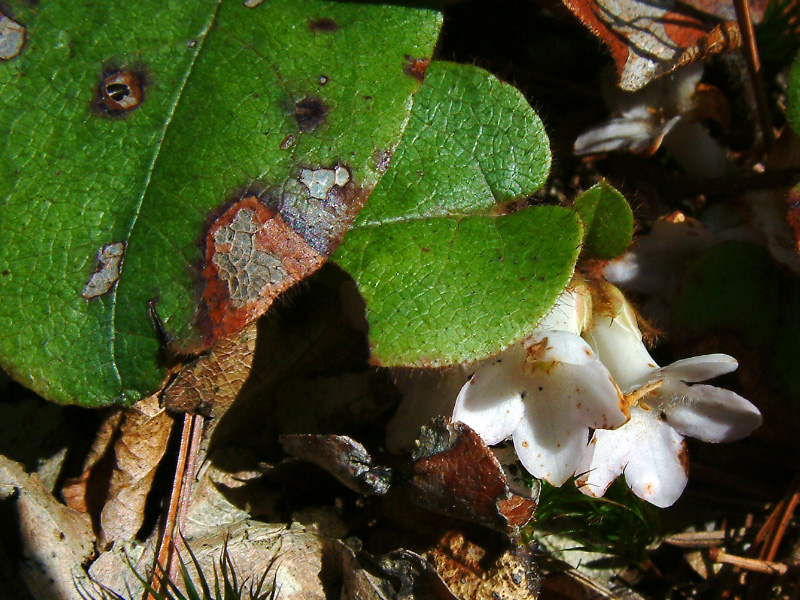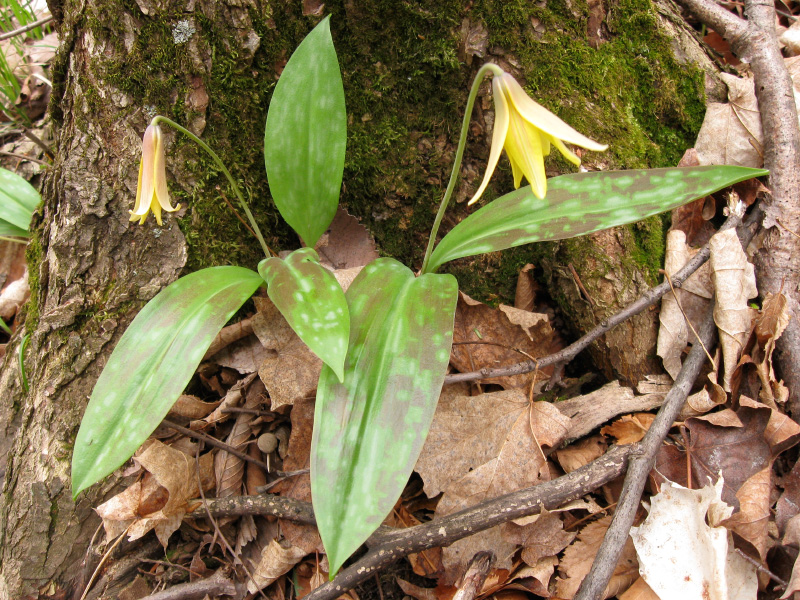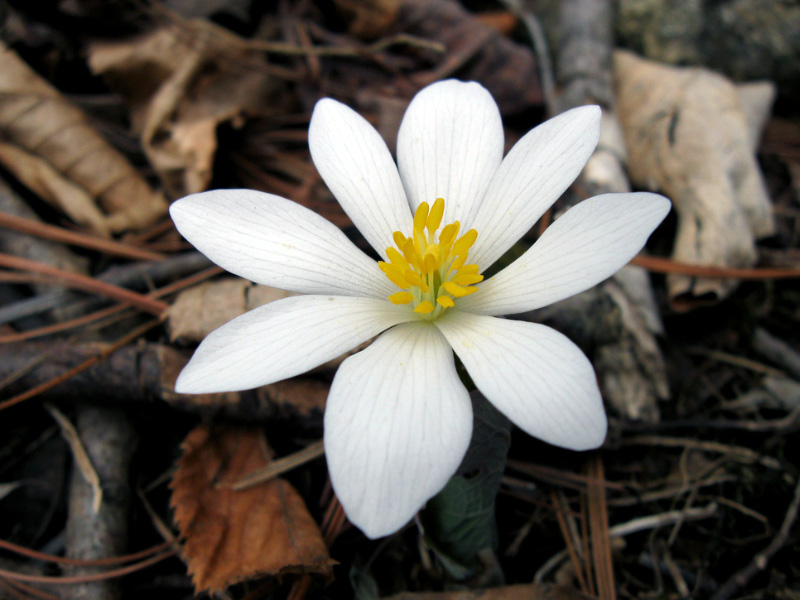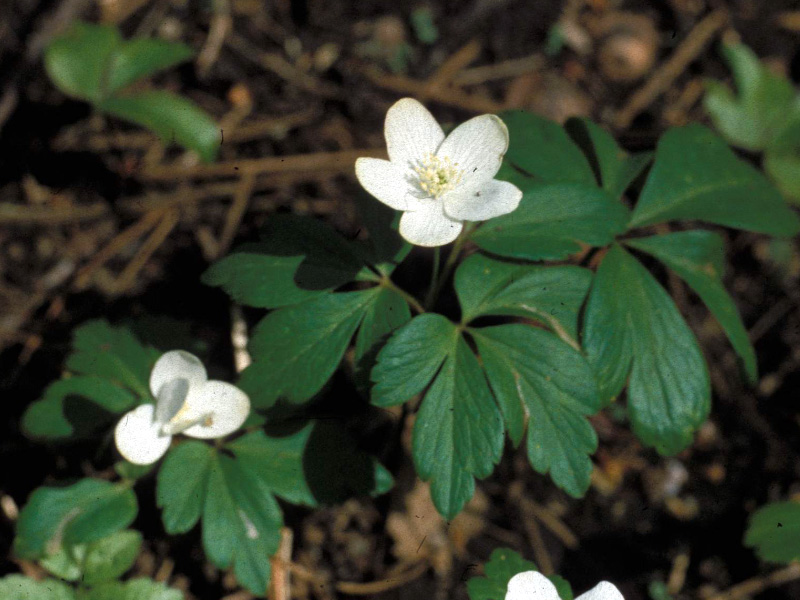Nothing banishes the winter blues like the reassuring sight of the spring’s first wildflowers. Many plants bloom while the deciduous trees above them are still bare; they soak up sunlight on the season’s first warm days before trees can shade out the forest floor. Here are five of the earliest flowers to spot.
Mayflower (Epigaea repens)

This is the state flower of Massachusetts. It’s also known as the Plymouth mayflower. According to legend, it was the first flower that the pilgrims saw after their first hard winter. A creeping plant, mayflower has small pink to white blooms. The leathery oval-shaped leaves stay green throughout the year.
Trout Lily (Erythronium americanum)

This small lily’s strange name comes from its splotchy leaves, which are said to resemble the mottled scales of a brook-trout. The bright yellow flowers point downward. They close on cloudy days and at night when bees and other pollinators aren’t active.
Bloodroot (Sanguinaria canadensis)

Look for a single white flower, typically with eight petals, emerging from a protective leaf. The stem, leaves, and roots produce a blood-red sap. The seeds have oil-rich growths called elaiosomes that ants relish. The insects carry the seeds to their nests, helping spread bloodroot across the forest floor.
Blunt-loped Hepatica (Anemone americana)

Clusters of white, pink, or purple flowers bloom amid leathery three-lobed leaves. The name “hepatica” comes from the Greek word for liver—medieval doctors thought that hepatica leaves looked like the body part, and that this meant that the plant would cure liver ailments. As with bloodroot, this plant’s seeds are dispersed by ants.
Wood-anemone (Anemone quinquefolia)

Look for one white to pinkish flower rising above three to five leaves. This plant’s species name quinquefolia means “five-leaved,” because each leaf is jagged and gives the appearance of being five instead of one.
Have you seen any of these early blooms yet? If so share where and when in the comments.


Wood anemone, spotted today at Rafe’s Chasm in Magnolia.
Apparently birds with the seed and one of my pots and I have had them blooming in a pot two years in the road now in Ohio
Wood Anemone is found now all over the woodland areas of Gower and is amazingly delicate and beautiful.
Tons of Erythronium in my backyard in Hanover; wood anemone and jack in the Pulpit all over Ingram Park in Cohasset
Bloodroot abounds in princeton, MA!
Trout Lily is blooming at Bolton Flats WMA
Found mayflowers in bloom Sunday April 20 along the old byways of the West Barnstable Conservation Lands (aka Trail of Tears.)
I noticed the trout lilies blooming on Easter in Marshfield,
I found hepatica on Mt. Toby this afternoon. It’s one of my favorite things to do in the spring 🙂 The trout lily leaves were coming up, but no flowers yet.
I saw hepatica and the wood anemone in Sweden a month ago. Right now the ground is covered with the wood anemones in Sweden-it looks like it snowed all over again. I have never seen these flowers here so I’m so happy to hear that I shold keep looking
I confess I have lived in MA for over 10 years and never found Hepatica. Last time I saw it anywhere was north-central Ohio. So if any of you spot it and don’t mind telling me where, I’d absolutely love to know!
Another old favorite: Wild leeks! Any leads there?
Best to all! Happy flowering.
it grows at the Hadwen Arboretum in Worcester, on Lovell Street
it also grows at the Grafton Town Cemetery on Millbury Street
Hi
I know of several patches of hepatica on Mt tom, a single plant in Greenfield’s Highland Park…and here and there over by our Green River Recreation area.
ALSO ramps (wild leeks) are abundant in Ashfield’s Bear Swamp – carpets! A Trustees of Reservations property – no picking please! You’ll also be delighted with carpets of spring beauties, dicentra, trillium, and more!
Bloodroot started blooming in my garden in Cambridge, MA, a few days ago, but the petals dropped during a night of sleet.
If you encounter some Mayflower (aka Trailing Arbutus) plants in bloom, I strongly encourage you to get down on all fours to sniff them. If you stick your nose right up to the pinkish-white flowers and take a strong whiff, you should get a delightful, spicy smell (probably produced by the plants to help attract pollinators).
haven’t seen any of them yet, but hope to see them soon
Great blog entry, Rosemary! It gets all excited for spring. Here at the Wakefield Estate in Milton, I just noticed the trout lilies and blood roots popping up – no flowers yet on the trout lilies but the blood root, hellebores, and skunk cabbage are in full bloom. Thanks Russ for the tip about mayflowers – I’ll take a good sniff if I can find one. I took my first sniff of the skunk cabbage flower yesterday and yes, it’s aptly named, but oh so beautiful!